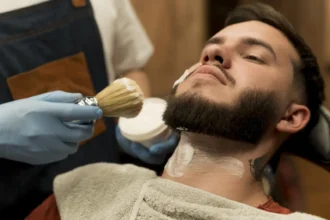Hair loss is a common concern for many men, with up to half experiencing some form of male-pattern baldness by the age of 50. The exact mechanisms behind hair loss are not fully understood, making treatments imperfect. However, there are several options available to help prevent and treat hair loss.
What causes male pattern baldness?
Male pattern baldness occurs when there is an increase in the enzyme dihydrotestosterone (DHT) in the scalp. DHT causes hair miniaturization, leading to thinner and shorter hair. This process typically starts around the temples and then moves to the crown of the head.

How to treat and prevent hair loss
The first step in treating hair loss is to consult a dermatologist, preferably one who specializes in hair loss. Medications such as minoxidil (Rogaine) and finasteride (Propecia) are commonly recommended. These medications work best when started early, as they are more effective at preventing hair loss than reversing it.
Minoxidil is applied topically and has been shown to grow hair when used consistently. Finasteride, on the other hand, is taken orally and has been shown to maintain or improve hair coverage over five years. Combination treatment using both medications has been found to be more effective than using either one alone.
Secondary therapies
Platelet-rich plasma (PRP) injections and low-level laser light therapy are additional options that can be used alongside medications. PRP injections involve drawing the patient’s blood, separating the plasma, and injecting it back into the scalp. Low-level laser light therapy uses helmets or combs to stimulate the scalp and promote hair growth.

Hair transplants
Hair transplants are considered the gold standard of hair restoration. The process involves removing hair follicles from one area and relocating them to where they are needed. This can be done by removing a strip from the back of the scalp or relocating individual follicles from around the head. Hair transplants can provide natural-looking results but are the most expensive option, starting at around $7,000.
Misinformation and scams
There are many myths and scams surrounding hair loss. Wearing a hat too often, not washing your hair enough, and rubbing onion or garlic on your head are all false remedies. Rosemary oil has been touted as a solution, but the evidence is thin. It is essential to consult a dermatologist before trying any treatments.
Hair loss can be a distressing experience for men, but there are many options available to help prevent and treat it. Consulting a dermatologist early on is crucial, as medications and other treatments work best when started early.







